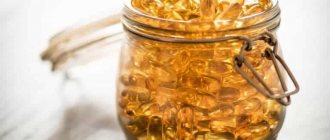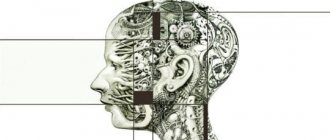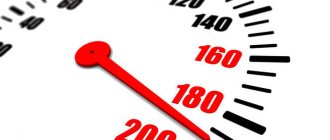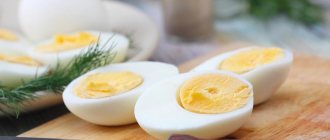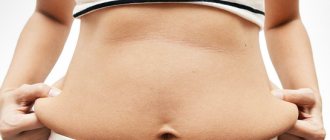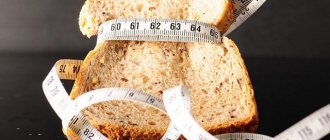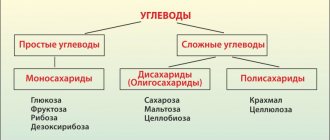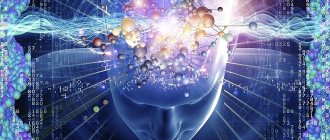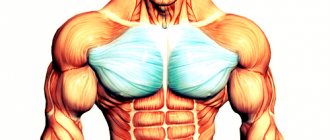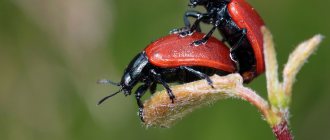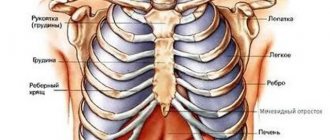Metabolic processes
Metabolism consists of two closely interrelated processes: assimilation and dissimilation. These two processes are not only simultaneous, but also interdependent. One is impossible without the other, because no work in the body can take place without the breakdown of substances previously assimilated by the body. On the other hand, synthesis processes in the body require energy, which is released during the breakdown of substances.
These two processes constitute metabolism in the body. Metabolism occurs constantly and continuously. All cells, all tissues of the body, not excluding such dense and seemingly immutable ones as bones and horny formations, are in a constant process of decay and renewal. This applies to both organic and inorganic substances.
Assimilation (anabolism)
Assimilation or anabolism is the transition of the constituent parts of food substances that enter the human body from the external environment into cells, that is, the transformation of simpler substances into chemically complex ones. As a result of assimilation, cell proliferation occurs. The younger the organism, the more active the assimilation processes occur in it, ensuring its growth and development.
Dissimilation (catabolism)
Dissimilation or catabolism is the breakdown (decomposition) of worn-out components of cells, including the breakdown of substances in protein compounds.
Plastic and energy metabolism
Air, water and food enter the body. In it, these substances are transformed, and excess heat, metabolic products and undigested food residues are released from the body.
Metabolism is the totality of all chemical changes and all types of transformations of substances and energy in the body, ensuring its development, vital activity, self-reproduction and connection with the environment.
General information about metabolism in the body is given in the article “METABOLISM AND ENERGY TRANSFORMATION IN THE CELL“.
❖ Main types of metabolism: ■ plastic metabolism ( assimilation, anabolism ) and ■ energy metabolism ( dissimilation, catabolism ).
Plastic metabolism (or assimilation, anabolism ) is a set of biochemical reactions for the formation of complex biopolymers from simple molecules, leading to the renewal of the structural parts of cells and tissues and requiring energy .
Plastic exchange includes:
■ supply from the external environment of substances necessary for the body;
■ transformation of incoming substances into compounds acceptable to body tissues;
■ synthesis of complex biopolymers (proteins, nucleic acids, etc.) from simple organic molecules;
■ synthesis of structural units of cells and replacement of obsolete structural parts of cells and tissues;
■ deposition (deposition) of nutrient reserves in the body.
Energy metabolism (or dissimilation, catabolism ) is a set of biochemical reactions of the breakdown of complex organic substances supplied with food or present in the body itself, as a result of which, firstly, the energy necessary for the body is extracted and, secondly, simple compounds are formed . Energy metabolism includes:
■ breakdown of energy-intensive compounds (carbohydrates, fats, some proteins) and release of the energy contained in them; in this case, part of the released energy is dissipated in the form of heat, and part is stored in the form of high-energy phosphate bonds of ATP molecules, which subsequently provide energy for the synthesis of molecules of organic substances necessary for the body, maintaining the vital functions of the body and performing work (muscular and mental);
■ breakdown of complex biopolymers (proteins, carbohydrates) into simple compounds, which serve as the starting material for the synthesis of complex biopolymers in the process of assimilation;
■ decomposition of obsolete tissue elements;
■ removal of decay products from the body;
■ mobilization of body reserves.
The processes of assimilation and dissimilation are interconnected and occur simultaneously in the body. At the same time, during different periods of life, one of the types of exchange may predominate.
For example, during the period of intensive growth of the body, the processes of plastic metabolism predominate, and during intense physical work, the processes of energy metabolism predominate.
Intermediate exchange
Intermediate (intermediary) metabolism is a variety of and complex transformations of organic and inorganic compounds in the cells of the body.
The study of intermediate metabolism reveals the essence of the life process and makes it possible to control it. The study of intermediate metabolism is carried out mainly by biochemical methods. Recently, for these purposes, the method of radioactive, labeled atoms has begun to be widely used, which makes it possible to trace the fate of a particular element in the body. It is enough to inject an animal with some molecule of protein, fat, carbohydrate or salt containing a radioactive element to ensure its distribution throughout the entire body within a few minutes. It has been shown, for example, that mice regain half their body fat in just 10 days.
When studying intermediate metabolism, they examine the transformations that substances absorbed into the blood from the intestine undergo in organs, tissues, cells, i.e., the processes of decomposition and synthesis, up to the formation of final products that must be excreted from the body.
The question of the ways and mechanisms of formation in the body of such substances as proteins, specific for each individual, for each organ, and even for each tissue, is very difficult and not sufficiently clear. It still remains unknown what their specificity is and how specific proteins are created from food substances. There is evidence that other organic substances - carbohydrates, fats and even inorganic residues - also have both individual and organ specificity.
To facilitate the study, intermediate metabolism can be divided into the metabolism of carbohydrates, fats, proteins, water and salts.
However, it should be borne in mind that this method of presentation is to a certain extent conventional, since the exchange of all these substances is inextricably linked and constitutes a single process.
Protein metabolism
see Protein metabolism
Proteins, or proteins, play an important role in the health, normal growth and development of the human body. They perform two different physiological functions: plastic and energetic.
Functions of proteins
The plastic function of proteins is that they are part of all cells and tissues. The energy function of proteins is that, when subjected to oxidation in the presence of oxygen, they break down and release energy. When 1 g of protein is broken down, 4.1 kcal of energy is released.
Protein structure
Proteins are made up of amino acids. Based on their amino acid composition, they are divided into complete and incomplete.
Complete proteins
Complete proteins are found in products of animal origin (meat, eggs, fish, caviar, milk and dairy products). For normal growth and development of the body, the daily diet of children and adolescents requires the presence of a sufficient amount of complete proteins.
Incomplete proteins
Incomplete proteins are found in products of plant origin (bread, potatoes, corn, peas, mung beans, beans, rice, etc.).
Fat metabolism
see Lipid metabolism
Fats, like proteins, have plastic and energy significance in the human body. 1 g of fat, oxidizing in the body in the presence of oxygen, releases 9.3 kcal of energy. There are two types of fats: animal and vegetable.
Carbohydrate metabolism
see Carbohydrate metabolism
For the human body, carbohydrates have mainly energy value. In particular, when performing physical work, carbohydrates are the first to be broken down and supply cells, tissues, and especially muscles with the necessary energy for their activity. When 1 g of carbohydrates is oxidized in the presence of oxygen, 4.1 kcal of energy is released. Carbohydrates are found in large quantities in foods of plant origin (bread, potatoes, fruits, melons) and sweets.
Water exchange
see Water-salt exchange#Water exchange
Amount of water in the body
Water is part of all cells and tissues of the human body. Depending on the physiological properties of each tissue, water is contained in different quantities. 50 - 60% of the body of an adult is water; in the body of young people the water content is higher. The daily requirement of the adult body for water is 2-3 liters.
The effect of water on the body
Water plays an important role in metabolism. If a person does not eat at all, but drinks water in normal quantities, then he can live 40-45 days (until his body weight decreases by 40%). But if, on the contrary, the diet is normal and water is not consumed, then the person may die within one week (until the weight decreases by 20-22%).
Water enters the body in food and in the form of drinks. Absorbed from the stomach and intestines into the blood, it participates in metabolic processes in cells and tissues; the main part of it is excreted through breathing, sweating and urine.
During the hot summer period, large losses of water occur in the body through sweating and breathing. Therefore, the body's need for water increases. If you are thirsty and feel dry in your mouth, without resorting to drinking plenty of water, you should often rinse your mouth; acidified water (lemon water, mineral water) quenches thirst better and the heart does not experience additional stress.
Exchange of mineral salts
see Water-salt metabolism#Exchange of mineral salts
Mineral salts are part of all cells and tissues of the human body. There are macro- and microelements.
Macronutrients
Macroelements include sodium, chlorine, calcium, phosphorus, potassium, and iron. They are found in large quantities in the blood, cells, especially bones.
Microelements
Microelements include manganese, cobalt, copper, aluminum, fluorine, iodine, zinc. They are found in blood, cells and bones, but in smaller quantities. Mineral salts play an important role in metabolism, especially in the processes of cell excitation.
Tissue respiration
Tissue respiration is the last stage of the breakdown of organic substances in the cells of the body, in which oxygen is involved and carbon dioxide is formed.
To explain why, during tissue respiration, substances that are usually resistant to molecular oxygen are oxidized, the idea of oxygen activation was put forward. It is assumed that oxygen forms peroxide, from which active oxygen is split off. There is also an activation of hydrogen, which passes from one substance to another, as a result of which one of the substances turns out to be richer in oxygen, i.e., oxidized, while the other becomes poorer in oxygen, i.e., reduced.
Cellular pigments, which contain iron and are located on the surface of cells and oxidizing substances, are of great importance in tissue respiration. Iron is one of the strongest catalysts, as can be seen in the example of hemoglobin in the blood. In addition, there are other catalysts that promote the transfer of oxygen or hydrogen. Of these, the enzyme catalase and the tripeptide glutathione are known, containing sulfur, which binds hydrogen, splitting it off from oxidizing substances
Plastic exchange
Plastic metabolism, or assimilation, is a set of reactions that ensure the synthesis of complex organic compounds from simpler ones (photosynthesis, chemosynthesis, protein biosynthesis, etc.).
Heterotrophic organisms build their own organic matter from organic food components. Heterotrophic assimilation essentially boils down to the rearrangement of molecules: organic food substances (proteins, fats, carbohydrates) → simple organic molecules (amino acids, fatty acids, monosaccharides) → macromolecules of the body (proteins, fats, carbohydrates).
Autotrophic organisms are capable of completely independently synthesizing organic substances from inorganic molecules consumed from the external environment.
In the process of photo- and chemosynthesis, simple organic compounds are formed, from which macromolecules are subsequently synthesized: inorganic substances (CO2, H2O) → simple organic molecules (amino acids, fatty acids, monosaccharides) → body macromolecules (proteins, fats, carbohydrates).
Photosynthesis
Photosynthesis
- synthesis of organic compounds from inorganic ones using light energy. The overall equation for photosynthesis is:
Photosynthesis occurs with the participation of photosynthetic pigments
, which have the unique property of converting the energy of sunlight into chemical bond energy in the form of ATP.
Photosynthetic pigments are protein-like substances. The most important pigment is chlorophyll. In eukaryotes, photosynthetic pigments are embedded in the inner membrane of plastids; in prokaryotes, they are embedded in invaginations of the cytoplasmic membrane. The structure of the chloroplast is very similar to the structure of the mitochondrion. The inner membrane of grana thylakoids contains photosynthetic pigments, as well as electron transport chain proteins and ATP synthetase enzyme molecules. The process of photosynthesis consists of two phases: light and dark. 1. The light phase of photosynthesis
occurs only in the light in the grana thylakoid membrane. This includes the absorption of light quanta by chlorophyll, the formation of an ATP molecule and the photolysis of water. Under the influence of a light quantum (hv), chlorophyll loses electrons, passing into an excited state:
These electrons are transferred by carriers to the outer surface of the thylakoid membrane, that is, facing the matrix, where they accumulate. At the same time, photolysis of water occurs inside the thylakoids, that is, its decomposition under the influence of light:
The resulting electrons are transferred by carriers to chlorophyll molecules and reduce them. Chlorophyll molecules return to a stable state. Hydrogen protons formed during photolysis of water accumulate inside the thylakoid, creating an H+ reservoir. As a result, the inner surface of the thylakoid membrane is charged positively (due to H+), and the outer surface is charged negatively (due to e-). As oppositely charged particles accumulate on both sides of the membrane, the potential difference increases. When the potential difference reaches a critical value, the electric field force begins to push protons through the ATP synthetase channel. The energy released in this case is used to phosphorylate ADP molecules: ADP + P → ATP.
The formation of ATP during photosynthesis under the influence of light energy is called photophosphorylation
.
Hydrogen ions, once on the outer surface of the thylakoid membrane, meet electrons there and form atomic hydrogen, which binds to the hydrogen carrier molecule NADP (nicotinamide adenine dinucleotide phosphate): 2H+ + 4e– + NADP+ → NADP H2. Thus, during the light phase of photosynthesis, three processes occur: the formation of oxygen due to the decomposition of water, the synthesis of ATP and the formation of hydrogen atoms in the form of NADP H2. Oxygen diffuses into the atmosphere, and ATP and NADP H2 participate in the processes of the dark phase. 2. The dark phase of photosynthesis
occurs in the chloroplast matrix both in the light and in the dark and represents a series of sequential transformations of CO2 coming from the air in the Calvin cycle. Dark phase reactions are carried out using the energy of ATP. In the Calvin cycle, CO2 combines with hydrogen from NADP H2 to form glucose. In the process of photosynthesis, in addition to monosaccharides (glucose, etc.), monomers of other organic compounds are synthesized - amino acids, glycerol and fatty acids. Thus, thanks to photosynthesis, plants provide themselves and all living things on Earth with the necessary organic substances and oxygen. Comparative characteristics of photosynthesis and respiration of eukaryotes are presented in the table.
Comparative characteristics of photosynthesis and respiration of eukaryotes
| Sign | Photosynthesis | Breath |
| Reaction equation | 6СО2 + 6Н2О + light energy → C6H12O6 + 6O2 | C6H12O6 + 6O2 → 6СО2 + 6Н2О + energy (ATP) |
| Starting materials | Carbon dioxide, water | Organic matter, oxygen |
| Reaction products | Organic matter, oxygen | Carbon dioxide, water |
| Importance in the cycle of substances | Synthesis of organic substances from inorganic substances | Decomposition of organic substances to inorganic ones |
| Conversion of energy | Conversion of light energy into the energy of chemical bonds of organic substances | Conversion of the energy of chemical bonds of organic substances into the energy of high-energy bonds of ATP |
| Key Stages | Light and dark phase (including Calvin cycle) | Incomplete oxidation (glycolysis) and complete oxidation (including Krebs cycle) |
| Location of the process | Chloroplasts | Hyaloplasm (incomplete oxidation) and mitochondria (complete oxidation) |
Genetic information in all organisms is stored in the form of a specific sequence of DNA nucleotides (or RNA in RNA viruses). Prokaryotes contain genetic information in the form of a single DNA molecule. In eukaryotic cells, genetic material is distributed in several DNA molecules organized into chromosomes. DNA consists of coding and non-coding regions. Coding regions code for RNA. Non-coding regions of DNA perform structural
function, allowing sections of genetic material to be packaged in a certain way, or
regulatory
function, participating in the inclusion of genes that direct protein synthesis.
The coding regions of DNA are genes. A gene
is a section of a DNA molecule that encodes the synthesis of one mRNA (and, accordingly, a polypeptide), rRNA or tRNA.
The section of the chromosome where the gene is located is called a locus
.
The set of genes of the cell nucleus is a genotype
, the set of genes of the haploid set of chromosomes is
the genome
, and the set of extranuclear DNA genes (mitochondria, plastids, cytoplasm) is
plasmon
.
The implementation of information recorded in genes through protein synthesis is called expression
(manifestation). Genetic information is stored as a specific sequence of DNA nucleotides and is realized as a sequence of amino acids in a protein. RNA acts as intermediaries and carriers of information. That is, the implementation of genetic information occurs as follows: DNA → RNA → protein. This process is carried out in two stages: 1) transcription; 2) broadcast.
Transcription
(from Latin
transcriptio
- rewriting) - RNA synthesis using DNA as a template. As a result, mRNA, tRNA and rRNA are formed. The transcription process requires a lot of energy in the form of ATP and is carried out by the enzyme RNA polymerase.
At the same time, not the entire DNA molecule is transcribed, but only its individual segments. Such a segment ( transcripton
) begins
with a promoter
- a section of DNA where RNA polymerase attaches and where transcription begins, and ends with
a terminator
- a section of DNA containing a signal to end transcription. Transcripton is a gene in molecular biology terms. Transcription, like replication, is based on the ability of the nitrogenous bases of nucleotides to bind complementarily. During transcription, the double strand of DNA is broken, and RNA synthesis is carried out along one DNA strand.
During the process of transcription, the sequence of DNA nucleotides is copied onto the synthesized mRNA molecule, which acts as a template in the process of protein biosynthesis. Prokaryotic genes consist only of coding nucleotide sequences.
Eukaryotic genes consist of alternating coding exons
) and non-coding (
intron
) regions.
After transcription, portions of the mRNA corresponding to the introns are removed during splicing, which is an integral part of processing.
Processing
- the process of formation of mature mRNA from its precursor pre-mRNA.
It includes two main events. 1. Attaching short sequences of nucleotides to the ends of the mRNA, indicating the start and end of translation. Splicing
is the removal of uninformative mRNA sequences corresponding to DNA introns.
As a result of splicing, the molecular weight of mRNA decreases by 10 times. Translation
(from Latin
translatio
- translation) is the synthesis of a polypeptide chain using mRNA as a template.
All three types of RNA are involved in translation: mRNA is the information matrix; tRNAs deliver amino acids and recognize codons; rRNA together with proteins form ribosomes, which hold mRNA, tRNA and protein and carry out the synthesis of the polypeptide chain.
Broadcast stages
| Stage | Characteristic |
| Initiation | Assembly of the complex involved in the synthesis of the polypeptide chain. The small subunit of the ribosome combines with the initiator mRNA , and then with mRNA , after which a whole ribosome is formed, consisting of a small and a large subparticle. |
| Elongation | Elongation of the polypeptide chain. The ribosome moves along the mRNA , which is accompanied by multiple repetitions of the cycle of adding the next amino acid to the growing polypeptide chain. |
| Termination | Completion of the synthesis of the polypeptide molecule. The ribosome reaches one of the three stop codons of the mRNA , and since there are no tRNAs with anticodons complementary to the stop codons, the synthesis of the polypeptide chain stops. It is released and separated from the ribosome. Ribosomal subparticles dissociate, separate from mRNA and can take part in the synthesis of the next polypeptide chain. |
Matrix synthesis reactions.
Matrix synthesis reactions include
- self-duplication of DNA (replication);
- formation of mRNA, tRNA and rRNA on a DNA molecule (transcription);
- protein biosynthesis into mRNA (translation).
What all these reactions have in common is that a DNA molecule in one case or an mRNA molecule in another acts as a matrix on which identical molecules are formed. Matrix synthesis reactions are the basis for the ability of living organisms to reproduce their own kind. Regulation of gene expression
. The body of a multicellular organism is made up of a variety of cell types. They differ in structure and function, that is, they are differentiated. The differences are manifested in the fact that in addition to the proteins necessary for any cell of the body, cells of each type also synthesize specialized proteins: keratin is formed in the epidermis, hemoglobin is formed in erythrocytes, etc. Cellular differentiation is caused by a change in the set of expressed genes and is not accompanied by any irreversible changes in the structure of the DNA sequences themselves.
Energy exchange
see Energy Exchange
As a result of chemical, mechanical, thermal changes in organic substances contained in food, their potential energy is converted into thermal, mechanical and electrical energy. Tissues and organs perform work, cells multiply, their worn-out components are renewed, the young organism grows and develops due to this generated energy. The constancy of the human body temperature is also ensured by this energy.
Basal metabolic rate or metabolism
This is the number of kilocalories spent by the body to maintain vital functions at rest. Basal metabolism is responsible for 60-70% of daily energy expenditure.
To calculate your basal metabolic rate, select the weight, height, and constant values for your gender and age from the table below and use them in the following equation:
Weight factor x weight (kg) + height factor x height (m) + constant
| Floor | Age | Basal Metabolism | ||
| Weight factor | Growth rate | Constant | ||
| Male | < 3 | 28.2 | 859 | -371 |
| 3-10 | 15.1 | 313 | 306 | |
| 10-18 | 15.6 | 266 | 299 | |
| 18-30 | 14.4 | 313 | 113 | |
| 30-60 | 11.4 | 541 | -137 | |
| >60 | 11.4 | 541 | -256 | |
| Female | < 3 | 30.4 | 703 | -287 |
| 3-10 | 15.9 | 210 | 349 | |
| 10-18 | 9.4 | 249 | 462 | |
| 18-30 | 10.4 | 615 | -282 | |
| 30-60 | 8.18 | 502 | -11.6 | |
| >60 | 8.52 | 421 | 10.7 | |
For example, 25-year-old Masha, who weighs 50 kg and is 1.65 cm tall, needs 1253 kcal to maintain the normal functioning of her body.
10.4 x 50 kg + 615 x 1.65 m – 282 = 1252.75 kcal
Metabolic rate
Metabolism occurs at different rates in different organs of the body. This can be partly judged by the amount of blood flowing through them, since nutrients and oxygen are delivered to them with blood.
| Per 100 g fabric | Passes per minute in the blood (in ml) |
| thyroid gland | 500 |
| kidney | 200-300 |
| liver | 150 |
| brain | 100 |
| intestines | 30 |
| pancreas | 30 |
| skeletal muscles | 12 |
Metabolism regulation
Nervous regulation
In higher animals, metabolic processes are regulated by the nervous system, which influences the course of all chemical processes. All changes in the course of metabolism are perceived by the nervous system, which reflexively stimulates the formation and secretion of enzymatic systems that carry out the breakdown and synthesis of substances.
Humoral regulation
Metabolic processes also depend on humoral regulation, which is determined by the state of the endocrine glands. The endocrine organs, especially the pituitary gland, adrenal glands, thyroid and gonads, largely determine the course of metabolism. Some of them affect the intensity of the dissimilation process, while others affect the metabolism of individual substances, fats, minerals, carbohydrates, etc.
The role of the liver in metabolism
see Digestive glands#Liver functions
Factors affecting metabolism
Age
Metabolism also varies among animals of different ages. In young animals, synthesis processes necessary for their growth predominate (their synthesis exceeds decay by 4-12 times). In adult animals, the processes of assimilation and dissimilation are usually balanced.
Lactation
The metabolism is also affected by the products produced by the animal. Thus, the metabolism of a lactating cow is reorganized towards the synthesis of specific substances of milk - casein, milk sugar. Material from the site https://wiki-med.com
Nutrition
Different animal species have different metabolisms, especially if they eat different foods. The nature and extent of metabolic processes is influenced by the nature of nutrition. Of particular importance is the amount and composition of proteins, vitamin and mineral composition of food. One-sided feeding of any one substance has shown that, feeding on proteins alone, animals can live even with muscular work. This is due to the fact that proteins are both a building material and a source of energy in the body.
Starvation
When fasting, the body uses its existing reserves, first liver glycogen, and then fat from fat depots. The breakdown of proteins in the body decreases, and the amount of nitrogen in secretions decreases. This is detected already from the first day of fasting and indicates that the decrease in protein breakdown is of a reflex nature, since within a day or two there are still a lot of nutrients in the intestines. With further fasting, nitrogen metabolism is established at a low level. Only after the supply of carbohydrates and fats in the body has already been exhausted does the increased breakdown of proteins begin and the release of nitrogen increases sharply. Now proteins constitute the main source of energy for the body. This is always a harbinger of imminent death. The respiratory coefficient at the beginning of fasting is 0.9 - the body burns mainly carbohydrates, then drops to 0.7 - fats are used, by the end of fasting it is 0.8 - the body burns proteins of its body.
Absolute fasting (when drinking water) can last up to 50 days in humans, over 100 days in dogs, and up to 30 days in horses.
The duration of fasting can be increased with pre-training, as it has been found that after short periods of fasting, the body stores reserves in larger quantities than usual, and this facilitates secondary fasting.
Necropsies of animals that have died from starvation show that different organs decrease in weight to varying degrees. The subcutaneous tissue loses the most weight, then the muscles, skin, and digestive canal; the glands and kidneys lose even less weight; the heart and brain lose no more than 2-3% of their weight.
Exercise stress
Metabolism during physical activity is accompanied by an intensification of the dissimilation process due to the body's great need for energy.
Even in complete rest, the animal spends energy on the work of internal organs, the activity of which never stops: the heart, respiratory muscles, kidneys, glands, etc. The skeletal muscles are constantly in a state of certain tension, the maintenance of which also requires a significant expenditure of energy. Animals spend a lot of energy on eating, chewing food and digesting it. In a horse, up to 20% of the energy of the food consumed is spent on this. But energy consumption especially increases during muscle work, and the more, the harder the work performed. Thus, a horse, when moving on a flat road at a speed of 5-6 km per hour, consumes 150 cals of heat for each kilometer of travel, and at a speed of 10-12 km per hour - 225 cals.
The source of energy during muscle work is mainly carbohydrates. During hard and long work, when the supply of carbohydrates is used up, the body uses fats and even proteins, first converting them into carbohydrates.
Environment
Metabolism is also greatly influenced by the environment - temperature, humidity, pressure, light. At low ambient temperatures, heat transfer increases, and this causes a reflex increase in its production and thereby intensifies the processes of decay in the body.
Categories: Metabolism Physiology
On this page there is material on the following topics:
what substances are released during metabolism
reception on the topic of metabolism
metabolism of substances occurring in tissues during tissue exchange of oxygen
metabolism nutrients
metabolic wave processes
Questions for this article:
What is the importance of proteins for the body?
What nutrients contain complete and incomplete proteins?
Tell us about the features of fat metabolism.
Metabolism: types and stages of metabolism.
Metabolism (“transformation, change”), metabolism is the complete process of transformation of chemical substances in the body, ensuring its growth, development, activity and life in general. In a living organism, energy is constantly consumed, not only during physical and mental work, but also during complete rest (sleep).
Metabolism is a complex of biochemical and energy processes that ensure the use of nutrients for the needs of the body and satisfy its needs for plastic and energy substances.
Metabolic stages
Conventionally, the metabolic process can be divided into three stages:
The first stage is the enzymatic breakdown of proteins, fats and carbohydrates into water-soluble amino acids, mono- and disaccharides, glycerol, fatty acids and other compounds, occurring in various parts of the gastrointestinal tract, and their absorption into the blood and lymph.
The second stage is the transport of nutrients from the blood to the tissues and cellular metabolism, which results in their enzymatic breakdown to final products. Some of these products are used to build the components of membranes, cytoplasm, for the synthesis of biologically active substances and the reproduction of cells and tissues. The breakdown of substances is accompanied by the release of energy, which is used for the process of synthesis and ensuring the functioning of each organ and the organism as a whole.
The third stage is the removal of metabolic end products in urine, feces, sweat, through the lungs in the form of CO2, etc.
Anabolism and catabolism
Metabolism consists of two opposite, simultaneously occurring processes.
The first - anabolism - combines all reactions associated with the synthesis of necessary substances, their absorption and use for the growth, development and functioning of the body.
The second - catabolism - includes reactions associated with the breakdown of substances, their oxidation and the removal of breakdown products from the body.
Mainly through the reactions of anabolism, the process of assimilation (absorption) of nutrients occurs, and the reactions of catabolism form the basis of dissimilation - the liberation of the body from the substances that constitute it (the use of the terms “assimilation” as a synonym for anabolism, and “dissimilation” as a synonym for catabolism is incorrect, since they are more general biological concepts).
Metabolism ensures the dynamic balance inherent in a living organism as a system, in which synthesis and destruction, reproduction and death are mutually balanced. Metabolic reactions are based on physical and chemical interactions between atoms and molecules, subject to the same laws for living and nonliving matter. What has been said means that the very possibility of the existence of life, in its fundamental essence, comes down to elementary acts of physical and chemical processes. But living organisms have their own characteristics.
Energy exchange in the body is inextricably linked with metabolism. Living organisms can exist only if there is a continuous supply of energy from outside. Therefore, they constantly need energy to perform various types of work: mechanical - moving the body, cardiac activity, etc.; galvanic - creating a potential difference in tissues and cells; chemical - synthesis of substances, etc.
The primary source of energy for all life on Earth, with very rare exceptions, is solar radiation. Food is formed thanks to the same energy of the Sun. The initial link of the food chain is plants that accumulate solar energy during photosynthesis. In the green pigment of plants - chlorophyll - under the influence of light quanta, organic substances - the basis of life - are synthesized from water and carbon dioxide.
The composition of food is complex and varied. It contains the most main nutrients, which include proteins, fats, and carbohydrates. Food also contains mineral elements - macroelements calcium, phosphorus, sodium, etc., microelements copper, cobalt, iodine, zinc, manganese, selenium, etc. There are also flavoring substances that give it special properties.
3. Formation, accumulation and consumption of energy that ensures the life of the body.
Energy in the body is generated continuously. All types of energy are converted into thermal energy. During the life of the body, energy is not only generated, but also continuously consumed. The ratio of energy entering the body to energy expended is called energy balance. Energy metabolism is the conversion of potential energy of nutrients into heat and work. The intensity of energy metabolism depends on the conditions in which the body is located. The body constantly has to expend the energy necessary to maintain the functioning of the brain, body temperature, activity of the heart, lungs and other organs, the work of which does not stop during life under any conditions. Energy consumption depends on the intensity of metabolic processes in the body, power, duration of work, as well as on gender, age, height, body weight, climatic and living conditions, nutrition, clothing. A person’s need for food (and therefore energy) changes significantly at different periods of life with changes in physiological functions and metabolism in the body.
The entire adult working population (from 18 to 60 years old), depending on the nature of work, is divided into 5 groups of types of labor activity (as the group increases, energy increases):
Group I – workers primarily in mental labor, approximately 2500 (very light physical activity);
II – people engaged in light labor approx. 2700 (light physical activity);
III – workers engaged in moderate labor of about 3000 (average physical activity);
IV – people engaged in heavy physical labor, approx. 3500 (high physical activity);
V – men engaged in particularly heavy physical labor, approx. 4000 (very high physical activity).
4. The body’s daily energy requirement, a method of approximate assessment.
Human energy is spent in three directions during the day:
1-basic metabolism (activity of internal organs at rest),
2- digestion of food,
3- different types of activities.
Human energy expenditure is usually expressed in units of calories (kcal) or J (kJ). The level of energy consumption varies depending on the nature of a person’s work, the state of the environment (in cold weather, energy consumption increases), the composition of food and the individual characteristics of a person (body weight, age, etc.).
According to the “Norms of physiological needs for nutrients and energy for various groups of the population” in force in Russia (developed by the Institute of Nutrition of the Russian Academy of Medical Sciences and approved by the Ministry of Health of the Russian Federation in 1991), the entire adult working population (from 18 to 60 years old) is divided depending on the nature of work into 5 groups of types of labor activity:
Group I – workers predominantly in mental work (very light physical activity);
II – people engaged in light work (light physical activity);
III – workers engaged in moderate labor (average physical activity);
IV – people engaged in heavy physical labor (high physical activity);
V – men engaged in particularly heavy physical labor (very high physical activity). Each group is divided into 3 categories: 18-29 years old, 30-39 years old, 40-59 years old. In addition, sexual differentiation is provided due to lower body weight and less intense metabolism in women compared to men.
There are the following approximate estimation methods:
1. Using a nomogram (height, weight - body surface), we calculate daily energy consumption using the formula.
2. Using the tabular method (by category depending on labor)
3. With the help of statistical studies, the daily requirement of the body is calculated for a certain profession.
